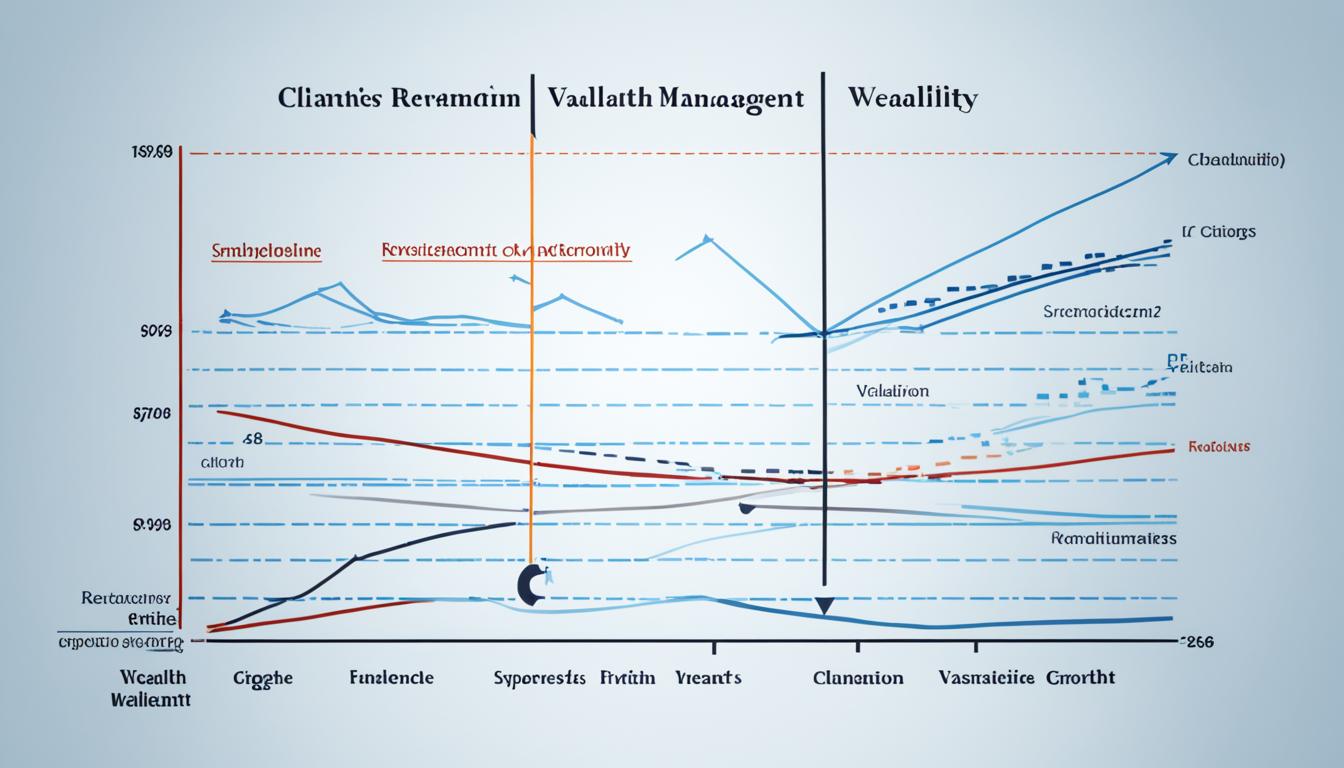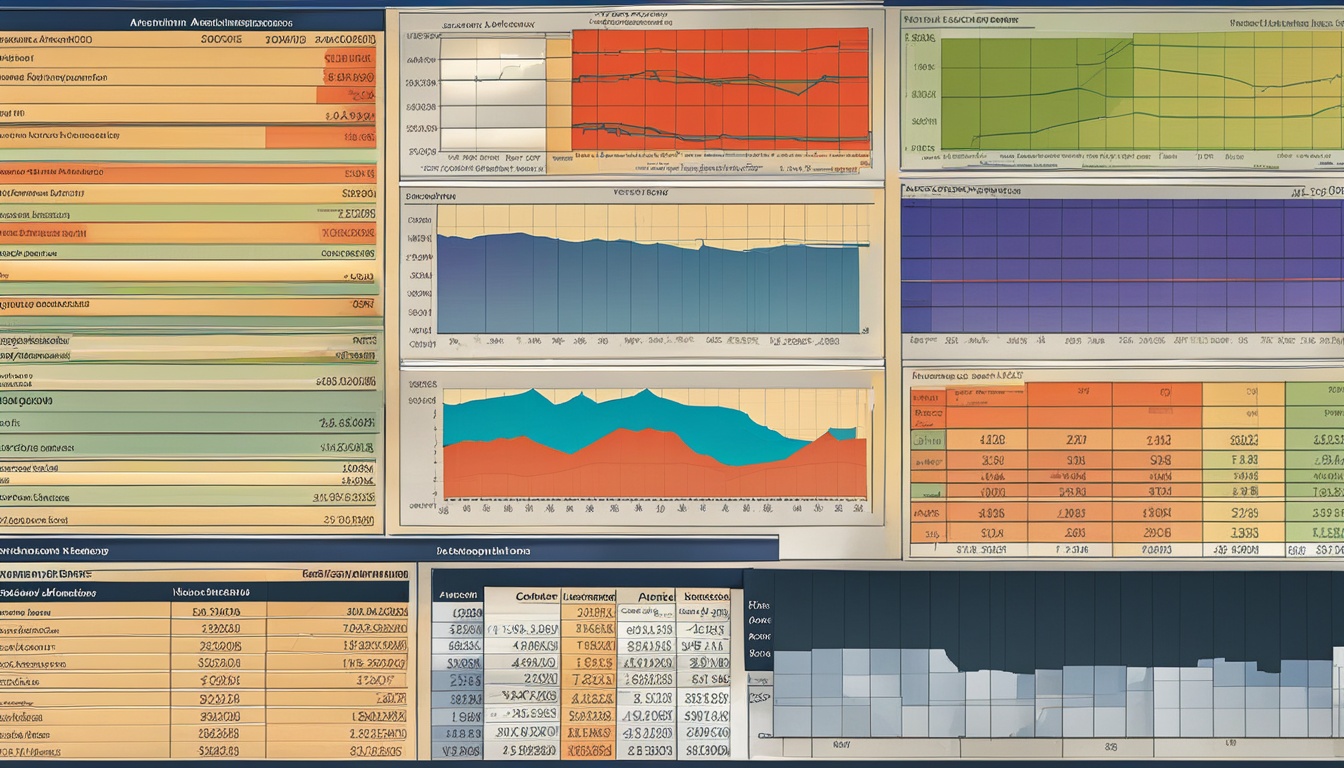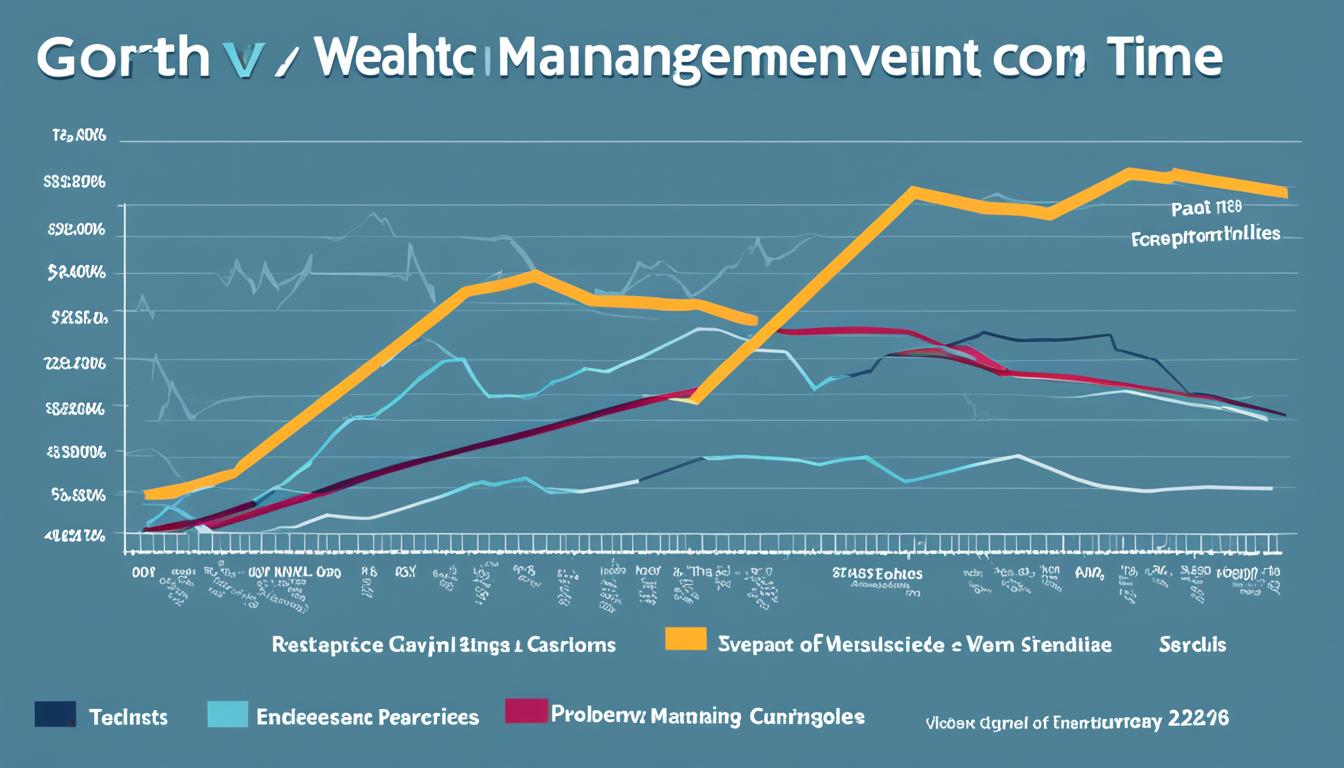Valuating a business is more than just finding its price. It’s also about looking at its future potential and how well it’s performing. In the wealth management sector, knowing the firm valuation multiples is key. These numbers help understand a firm’s value by looking at its financial health, growth opportunities, and its place in the market.
By knowing what affects these multiples, investors and those involved can make smarter choices. This is very important in the finance area. They learn more about the worth and potential risks of a firm.
Key Takeaways:
- Wealth management firm valuation multiples provide a comprehensive assessment of a firm’s financial performance, growth potential, and market position.
- Understanding the factors that influence wealth management firm valuation multiples is essential for informed investment decisions in the finance sector.
- Firm valuation multiples help investors assess the potential returns and risks associated with investing in a wealth management firm.
- Valuation methods such as the asset-based approach, income approach, and market approach are used to determine the worth of a wealth management firm.
- Staying updated with the latest trends in wealth management firm valuation multiples is crucial for navigating the dynamic landscape of the finance sector.
Factors Impacting Wealth Management Firm Valuation Multiples
Many factors decide the valuation multiples of wealth management firms. It’s key to look at different elements that can change these numbers.
The firm’s financial performance is the first major factor. It looks at things like revenue growth and if it’s making profits. A firm that’s managing its money well likely has better valuation multiples.

How much a firm can grow is also very important. Investors want to see firms that can grow and keep growing. These are firms with smart plans, new chances for business, and who bring in new clients. They often have better valuation multiples.
The diversification of the client base matters a lot too. If a firm’s clients come from many sectors and locations, it seems less risky. This makes the firm more appealing to investors and may lead to higher valuation multiples.
“The balance between risk and reward is a crucial consideration when determining the valuation multiples of wealth management firms.”
Another big factor is how a firm balances risk and reward. Investors like firms that offer good returns but don’t take too many risks. Firms that manage this balance well often get better valuation multiples.
Looking at revenue streams is also essential. Investors like firms with regular income and few surprises. Firms that keep getting business from the same clients can often get better valuation multiples.
How well a firm has done in the market is an important point. Firms that are big players and have a clear edge over others usually get better valuation multiples. They show they’re stable and have room to grow, making them appealing to investors.
Lastly, customer satisfaction is crucial in looking at a firm’s value. Clients who are happy tend to stay and bring in new business. Firms with lots of happy clients often get better valuation multiples.
Finding trend data and comparing the firm to other similar businesses is valuable. This helps investors and those interested in the firm understand its worth. It guides them in making smart choices in the finance world.
Valuation Methods for Wealth Management Firms
Various valuation methods are used to check a wealth management firm’s value. They help stakeholders figure out a firm’s fair price. This is important for smart investments and buyouts. The key valuation methods for these firms are:
- Asset-based approach: This method looks at the firm’s physical and non-physical assets. Physical assets are things like offices, equipment, and money. Non-physical assets are the firm’s reputation, ideas, and customer connections. It’s good when a firm’s assets really impact its income.
- Income approach: This method looks at the firm’s future money-making ability. It uses old financial data and future predictions. It considers things like money growth, costs, and interest rates to find what future money is worth today. This is great for firms with steady earnings and lots of customers.
- Market approach: This way compares a firm to others in the business. It looks at the value of the firm’s stock and sales, for example. By comparing the wealth management firm to its competitors, businesses can see if it’s priced right. It works well when you have lots of similar businesses to look at.
It’s key to know each method has its good and bad points. Picking one depends on the situation, how much good data you have, and what the stakeholders like.
A good example is if someone wants to buy a wealth management firm. They can use the asset method to see the worth of everything the firm has. The earnings method tells them how much money they could make in the future. The market method compares the firm to others to see if it’s a good deal.

By mixing these methods, investors and those involved get a solid idea about a wealth management firm’s value and potential. This helps with making choices about mergers, using money wisely, and picking investment chances in the finance world.
Trends in Wealth Management Firm Valuation Multiples
Wealth management firms’ value can change over time. This happens because of the market and industry’s constant developments. Knowing these trends is key for investors and others in this field. It helps them make smart choices and keep up with their rivals.
Market conditions highly impact the value of wealth management firms. Things like economic changes, trends in the field, and how investors feel can sway these values. If the market is doing well and people want wealth management services, the firms’ worth goes up. But, in tough times or when the future looks unsure, these values might drop.
Changes in rules and regulations can also change a firm’s worth. If the laws, like those on how firms can operate or standards they need to meet, get tougher, it could influence their profits and chances of growth. Firms that understand and follow these new rules might end up being worth more.
Technology has deeply changed the wealth management game. It has made firms better at what they do and how they help customers. Firms that use tech well to get better at serving customers and coming up with new ideas are more likely to be valued higher.
What investors want can also change how much a wealth management firm is valued. Right now, many investors are looking for firms that focus on making positive changes, invest in the future, or use digital ways to manage wealth. Firms that meet these interests could find their value going up.
It’s important for anyone looking to invest or be a part of the wealth management world to keep up with these value trends. Understanding what makes a firm worth more and how the market is changing can guide smart investment decisions. This knowledge can help investors reach their goals by making choices that fit their plans.

Business Valuation Strategies in the Wealth Management Sector
Valuing a wealth management firm requires smart strategies. It’s crucial to look at the firm’s financial health, chances for growth, its clients, and position in the market.
Evaluating financial performance is key. Look at metrics like revenue growth, profits, and return on investment. This helps assess the firm’s health and likely future success.
Assessing growth potential matters a lot too. Consider if the firm can get more clients, offer new services, and get into new markets. This looks at the firm’s future opportunities to grow.
Knowing the firm’s client base is vital. Check who the clients are, how many stay, and how happy they are. This info shows if the firm can keep and grow its clients, affecting its worth.
The firm’s market standing is also important. Look at its market share, what makes it stand out, and its reputation. This tells you how it competes and if it can do better than rivals.
Remember, in this sector, certain things really count. These include regular income that’s steady and client happiness. These show a firm’s strong relationships and future growth chances.
By using strong valuation strategies, covering finances, growth, clients, and market, you can understand a wealth management firm’s true value. This helps in making wise choices.

Importance of Wealth Management Firm Valuation Multiples
Valuation multiples are key in the finance world. They give a clear view of a firm’s value. This helps both buyers and sellers in making fair deals. Investors use these multiples to check possible returns and risks in a firm.
These numbers also tell us a lot about a firm’s health and position. They guide smart decision-making by showing a firm’s current status and its future outlook. In finance, knowing a firm’s true worth is crucial for good planning and choices.
“Wealth management firm valuation multiples provide an objective assessment of a company’s worth, enabling fair negotiations and informed decision-making in mergers and acquisitions.”
Valuation multiples are useful to see how a firm stacks up against others. This helps in recognizing strengths and weaknesses. As a result, firms can place themselves better in the market.
Insights into Financial Health and Growth Potential
These multiples hint at a firm’s condition and potential. High multiples show strong performance. It means the firm has steady income and is expected to grow. Low multiples, however, may signal difficulties ahead.

A visual display of these multiples can really drive home their importance. It clearly shows a firm’s health and growth chances within the wealth management sector.
Enhanced Decision-Making with Valuation Multiples
The finance world looks closely at valuation multiples. They help investors, shareholders, and buyers make good choices. By examining these figures, stakeholders can smartly pick their investments and manage risks well.
- Investors can gauge a wealth management firm’s attractiveness by its valuation.
- Potential buyers can ensure they’re not overpaying by relying on these multiples.
- Shareholders can see if their wealth firms are doing well and meet their goals.
With the right approach to valuation multiples, decisions in the wealth management sector can lead to much better outcomes.
Conclusion
Knowing about how wealth management firms are valued helps in smart investing and planning. By looking into the things that affect these values and using the right ways to check them, you can avoid problems and make more money.
Valuation multiples give hints about how well wealth management firms are doing. They show the firm’s money situation, if it’s growing, the types of clients it serves, and how it’s doing against competitors. This info helps investors figure out if it’s a good idea to put their money in a firm.
It’s vital to stay on top of news in the wealth management world. This means, knowing about any changes in rules, what investors like, and new technologies. Being aware of these things helps investors make good choices and adjust their plans as needed.
Choosing the right way to value a firm is crucial. Using ways such as looking at its assets, how it makes money, and its position in the market can give a clearer image of its true value. This helps stakeholders understand a firm’s worth better.
FAQ
What are some factors that impact wealth management firm valuation multiples?
Many things can change how we value a wealth management firm. This includes how well the business is doing financially. The chance for the company to grow is also key.
Other factors like the types of clients they have, risks they take, and how sure their money is make a big difference too. How strong their position is in the market and if customers like them matters.
What are the common valuation methods used for wealth management firms?
When looking at how much a wealth management firm is worth, several methods are common. We might look at the firm’s assets or its past and future income. Some ways also compare it to similar firms out there.
How do trends in the wealth management industry impact valuation multiples?
The world of wealth management is always changing. Things like the economy, new rules, what customers want, and how technology grows can change a firm’s value. Understanding these trends helps people make good choices and know the market well.
What are some business valuation strategies for wealth management firms?
To figure out how much a wealth management firm is truly worth, we should look at how it’s doing now and its chances to grow. Who their clients are and how they stand out in the market is important.
Don’t forget, things like regular money coming in, happy customers, and a strong market position are big assets. They can make a firm more valuable.
Why are wealth management firm valuation multiples important?
Knowing a firm’s value helps in many ways. It makes buying or selling it fair and clear. For investors, it shows the chance of making money against the risk. And it gives a detailed look at a firm’s health and growth.
What are some key points to understand about wealth management firm valuation multiples?
Understanding how wealth management firms are valued is key for smart investments and solid plans. It’s about digging into what makes a value shift, using the right methods, and watching the trends closely. This way, investors and those in the business can make the most of their moves.
